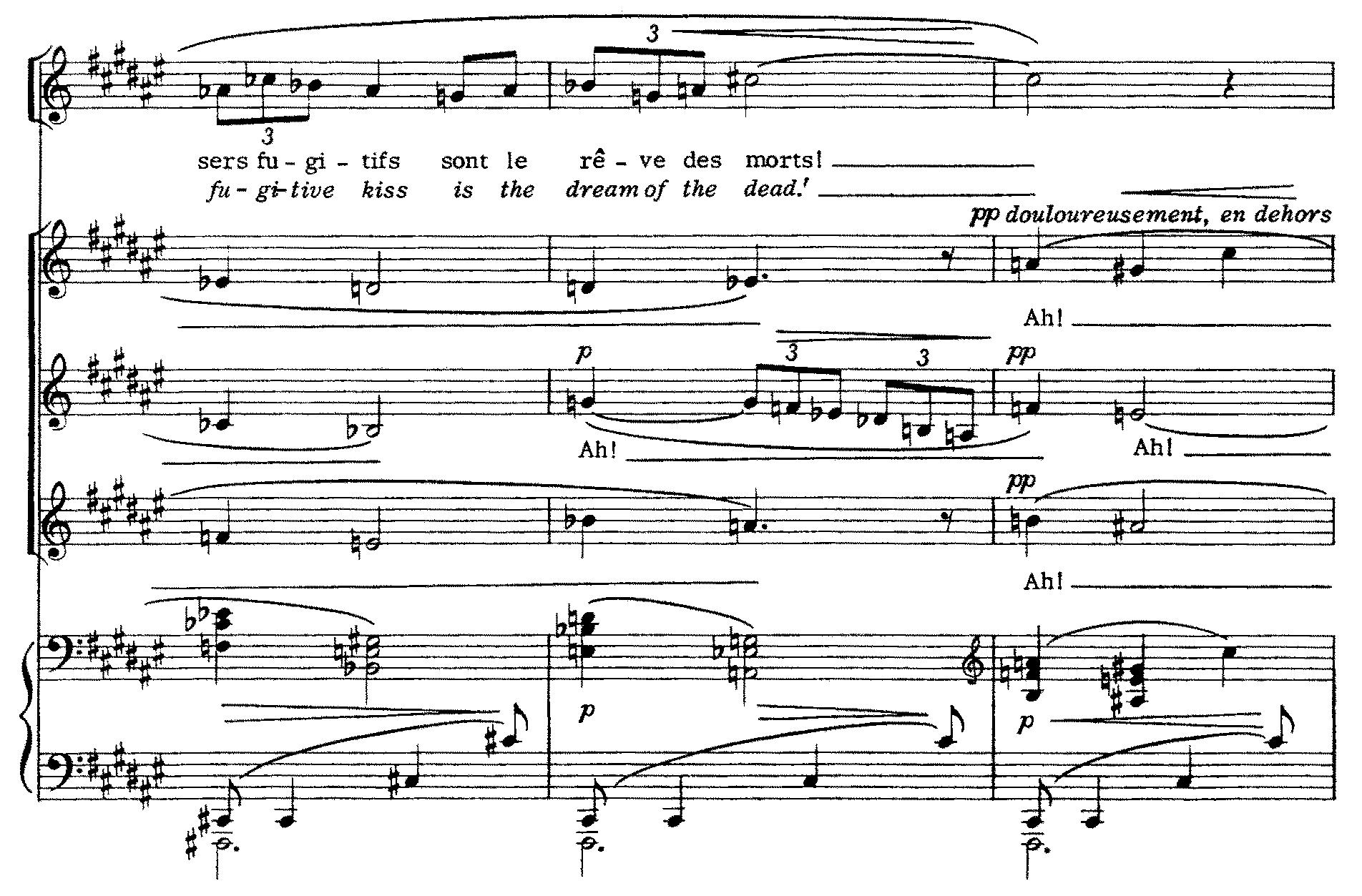Dramatic Vocalise Database
Lili Boulanger (1893–1918)
Les Sirènes (1911)
Lili Boulanger (1893–1918), sister of Nadia, composed a work for chorus and piano that strongly shows the influence of Debussy’s “Sirènes.” Boulanger composed Les Sirènes for soprano solo, mixed chorus (SAT), and piano in 1911, two years before she became the first woman to win the Prix de Rome. Not only does this work share a similar title with Debussy’s movement, it also has similar harmonic progressions, is in a similar key (B major versus E major in Debussy’s “Sirènes”), and also includes wordless vocalization. The text by Charles Grandmougin is as follows:
Nous sommes la beauté qui charme les plus forts.
Les fleurs tremblantes de l’écume
Et de la brume,
Nos baisers fugitives sont le rêve des morts!
Parmi nos chevelures blondes
L’eau miroite en larmes d’argent.
Nos regards à l’éclat changeant
Sont verts et bleus comme les ondes.
Avec un bruit pareil
Aux delicats frissons
Des moissons
Nous voltigeons
Sans avoir d’ailes.
Nous cherchons de tendres vainqueurs.
Nous sommes les soeurs immortelles
Offertes aux desires de vos terrestres coeurs.
[We are the beauty which charms the strongest men.
Trembling flowers of foam
and mist,
our fleeing kisses are the dream of the dead!
Amidst our blond tresses
the water gleams like tears of silver.
Our shimmering glances
are blue and green as waves.
With a noise like the
delicate shivers
of harvests
we flutter
without having wings.
We seek tender victors.
We are the immortal sisters
offered up to the desires of your earthly hearts.]1
After ten measures of piano introduction the three voice types enter canonically with the opening phrase, the soprano part having the additional indication “en dehors avec charme” [“prominently with charm”]. At the end of the first stanza an additional chorus (SAT), designated in the score as “Voix dans la coulisse (comme un murmure, au loin)” [“Voices behind the scenes (like a murmur, distant)”], sing several measures on the vowel “Ah!”


Boulanger, Les Sirènes, mm. 21–26
2The second and third stanzas are sung by solo soprano, followed by the chorus singing the fourth. The song ends with a recapitulation of the opening stanza, once more with the offstage chorus singing “Ah” at the end as before.
(Nauman 2009, 103–5)
Examples | Comments |
| Les Sirènes |
Footnotes
1 Lili Boulanger, Les Sirènes (New York and London: G. Schirmer, 1981).
2 Translated by James Wood, liner notes to Clairières dans le ciel, by Lili Boulanger, Hyperion CDA66726, 10–11.
3 Lili Boulanger, Les Sirènes (New York and London: G. Schirmer, 1981).